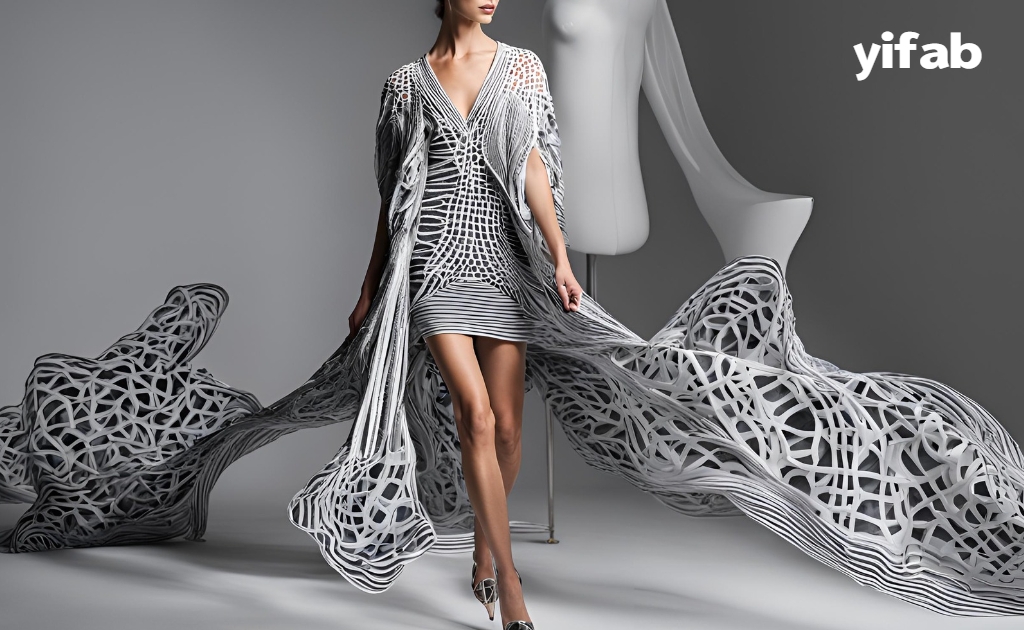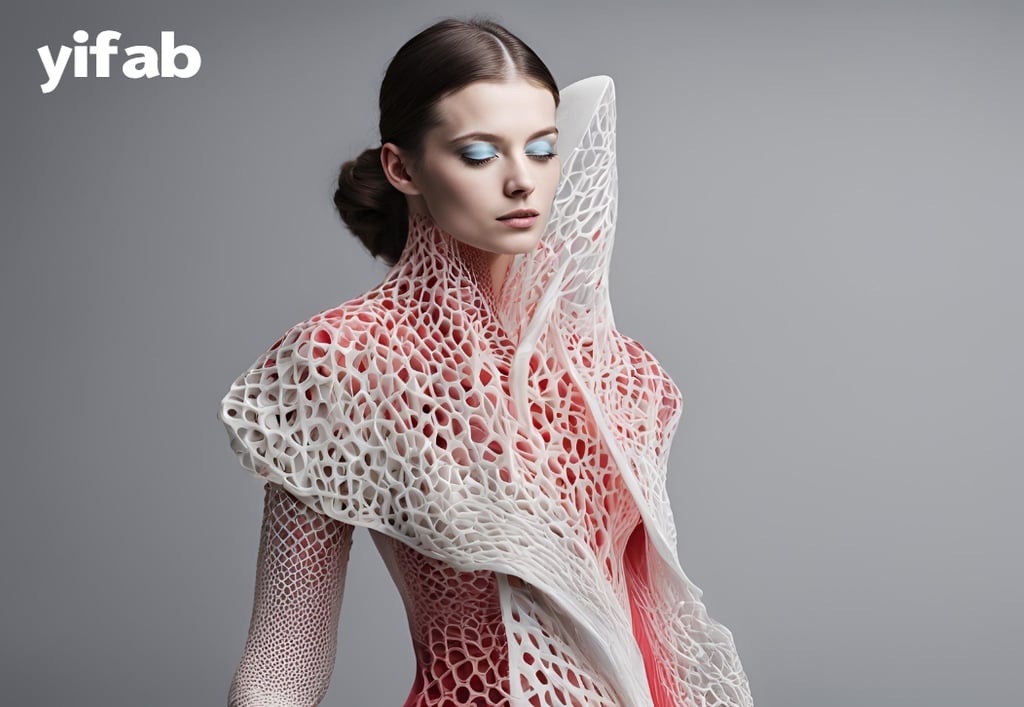Revolutionizing Fashion Textiles: The Impact of 3D Printing and Digital Printing
The Impact of 3D Printing and Digital Printing
10/16/20242 دقيقة قراءة


In the dynamic world of fashion, technological innovations are continually reshaping the landscape of textile production. Among these advancements, 3D printing and digital printing have emerged as transformative forces, offering new possibilities for creativity, sustainability, and efficiency. Let's explore how these technologies are revolutionizing fashion textiles and driving the industry forward.
1. 3D Printing: Pushing the Boundaries of Fabric Design
Customization and Complexity: Unlike traditional manufacturing methods, 3D printing allows designers to create intricate patterns and textures directly onto fabrics. This capability opens up a world of customization where each piece can be unique, tailored to specific design requirements or customer preferences.
Innovative Materials: Beyond conventional textiles, 3D printing enables experimentation with a wide range of materials, including plastics, metals, and even bio-materials. This versatility expands the potential applications of fashion fabrics, introducing new aesthetics and functionalities.
Sustainability: One of the most significant advantages of 3D printing in textiles is its potential to reduce waste. By using only the necessary materials in production, this technology minimizes material waste and energy consumption compared to traditional manufacturing processes.
2. Digital Printing: Precision and Versatility in Fabric Decoration
High Precision: Digital printing allows for precise placement of colors and designs on fabrics, achieving intricate details and vibrant hues that are difficult to replicate with traditional methods like screen printing or dyeing.
On-Demand Production: The ability to print designs on fabrics on-demand is revolutionizing the supply chain in fashion. This flexibility reduces inventory costs, eliminates overproduction, and enables brands to respond quickly to market trends and consumer demands.
Environmental Benefits: Digital printing is also more environmentally friendly compared to traditional dyeing processes. It requires less water and energy, produces minimal wastewater, and eliminates the need for harsh chemicals typically used in conventional textile printing.
3. Impact on Design and Consumer Experience
Design Freedom: Both 3D printing and digital printing offer designers unprecedented freedom to explore innovative designs and concepts that were previously challenging or impossible to achieve. This creative freedom fuels experimentation and pushes the boundaries of fashion aesthetics.
Enhanced Consumer Engagement: These technologies enhance consumer engagement by offering personalized and customizable products. From bespoke clothing to limited-edition prints, brands can cater to individual preferences and strengthen customer loyalty through unique, tailored experiences.
4. Future Trends and Considerations
Integration with Smart Textiles: The integration of 3D printing and digital printing with smart textiles is an exciting area of innovation. Imagine garments embedded with sensors or responsive fabrics that adapt to environmental conditions—these advancements are reshaping the future of functional and interactive apparel.
Sustainability and Ethical Practices: As technology continues to evolve, there is a growing emphasis on sustainability and ethical practices in textile production. Brands are increasingly adopting these technologies not only for their creative potential but also for their ability to support environmentally conscious manufacturing processes.
Conclusion: Embracing Innovation in Fashion Textiles
In conclusion, 3D printing and digital printing are revolutionizing fashion textiles by offering unparalleled design possibilities, sustainability benefits, and enhanced consumer experiences. As these technologies continue to advance, they will play a crucial role in shaping the future of the fashion industry—driving creativity, efficiency, and sustainability forward.


